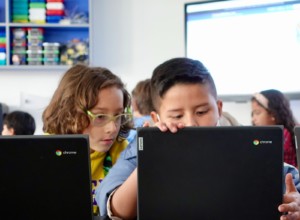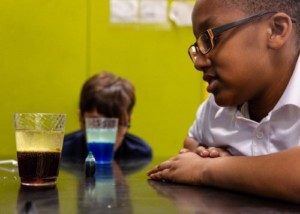The Skills Students Need to Survive and Thrive

Gayle Allen
Hiring well is a challenge for any organization. If a company’s success depends on hiring employees with strong technical capabilities, high-level design skills, and an entrepreneurial mindset, the challenge gets that much harder. As a leader at BrightBytes, an educational technology company, I’ve experienced these types of hiring challenges firsthand.
To address the growing skills gap, some organizations are developing in-house professional learning programs. Others are reaching out to colleges and universities to build a stronger pipeline. To address the problem in a more proactive way, what if we built relationships even earlier? How about at the K-12 level? Together, we could learn from each other and connect students to an entrepreneurial culture at a younger age.
Project 2025
Michael Kris, Middle School Principal at Trinity Valley School in Texas, is a K-12 EdLeader who is leading the way in building these types of connections. This year, he kicked off a project titled, Project 2025: How Teachers Research the Future. As part of the project, he shared three key goals:
- Strengthen understandings of twenty-first century skills so that they can connect with the needs of students’ future selves and equip them with the skills they need to face the modern workforce with confidence;
- Use this new understanding to augment academic programs and create additional innovative and robust experiences for students; and
- Build connections between his school and the external community in ways that might be mutually beneficial.
To achieve these goals, Mike asked teachers to schedule a call with an industry leader outside the field of K-12 education, so that they could learn, “What skills, habits, or mindsets make people successful in your field.” I learned about the project after speaking with one of the teachers. It gave me the chance to share the skills we look for when we hire.
The Skills All Students Need
While there are no substitutes for the high-level technical skills associated with programming, statistics, applied mathematics, and design, there are additional skills students need in order to survive and thrive in technical and non-technical fields. Without them, students will flounder in what is becoming an increasingly uncertain job market. These skills include:
Communication. Demonstrate strong writing, speaking, and listening skills. These skills are game changers for employees with strong technical skills, since their work often impacts members of other teams, technical and non-technical, across the company.
Critical thinking. Assess a situation and determine whether or not to ask for help, seek additional information, or forge ahead. Recognize when to “pull the cord” and stop the bus.
Ownership. When taking on a project, own it from start to finish. Be reliable and know what needs to be done to complete the task, project, or initiative, whether alone or as a member of a team.
Leadership. Act as leader, with or without the title. Recognize that leadership lies in how you behave and how you conduct yourself as much as it does in the title that you hold.
Creative problem solving. Enjoy solving problems and doing so in creative ways, especially when resources may be constrained, time short, and expectations high.
Self-directed learning. Own professional learning and stay up-to-date on new trends in the field. Participate in ongoing learning through online and in-person options, and be willing to share what you’ve learned with colleagues.
Curiosity. Get stumped, but never get overwhelmed. When stuck, turn to personal and professional learning networks to problem solve. Failure is a part of the learning process.
Collaboration. Contribute to larger projects and meet game-changing goals. View collaboration as a key part of the job, especially when it comes to achieving outcomes.
High threshold for uncertainty. Be comfortable with the uncertainty that often accompanies problem solving, innovative and creative work. Uncertainty is what drives leaders to seek answers and solve problems. Recognize that setbacks and dead-ends are part of the process.
What the Future Holds
Preparing a skilled workforce is a daunting challenge. To address the gap, organizations will need to strengthen the pipeline to learning opportunities in K-12, postsecondary education, and on the job. This includes building relationships with colleges, universities, and the growing body of non-traditional learning organizations, such as boot camp, data analytics, and design programs. Companies also need to develop in-house mentoring and professional learning programs. But waiting until employees are in the pipeline or already employed is too late. We need to start earlier. Mike’s Project 2025 is an outstanding example of how we can build the real-world learning relationships we need to empower our students and ensure their success, starting in K-12.
For more on job skills and student entrepreneurship, check out:
- The Great Skills-Based Education Land Grab
- Student Entrepreneurship in Action
- Why Entrepreneurship Education K-12, Every Student Every Year?

Gayle Allen is the Chief Learning Officer and Director of BrightBytes Labs, at BrightBytes. Gayle tweets with @GAllenTC and blogs at Connecting the Thoughts.







0 Comments
Leave a Comment
Your email address will not be published. All fields are required.